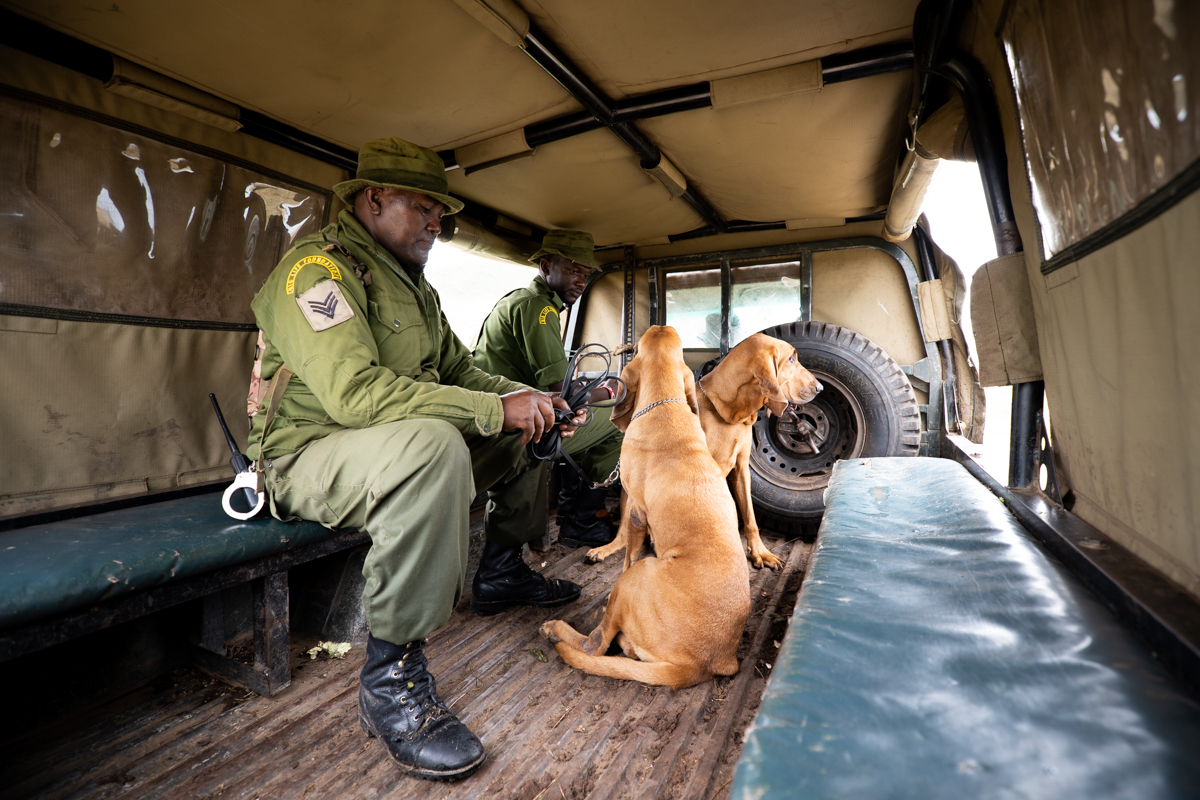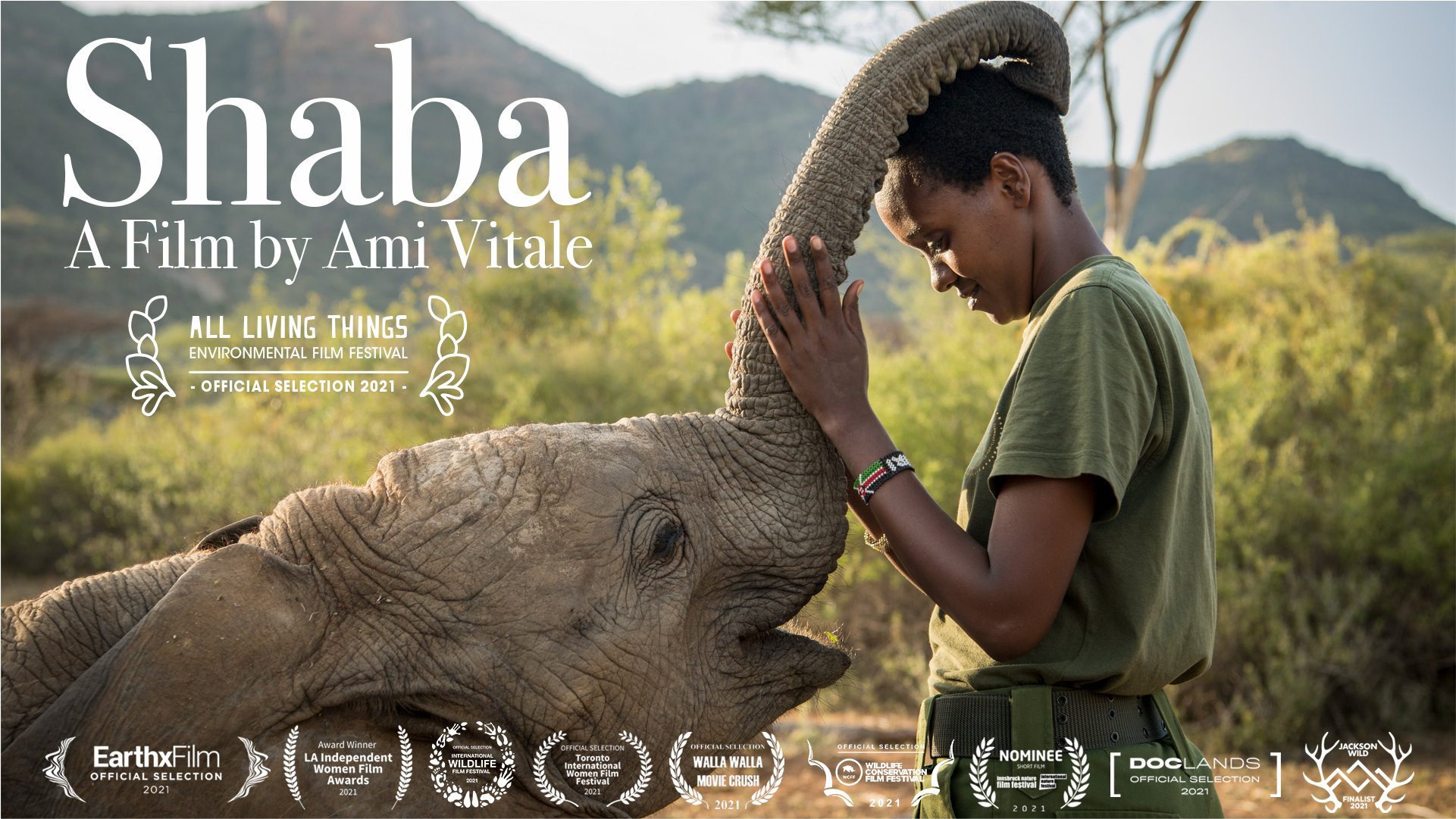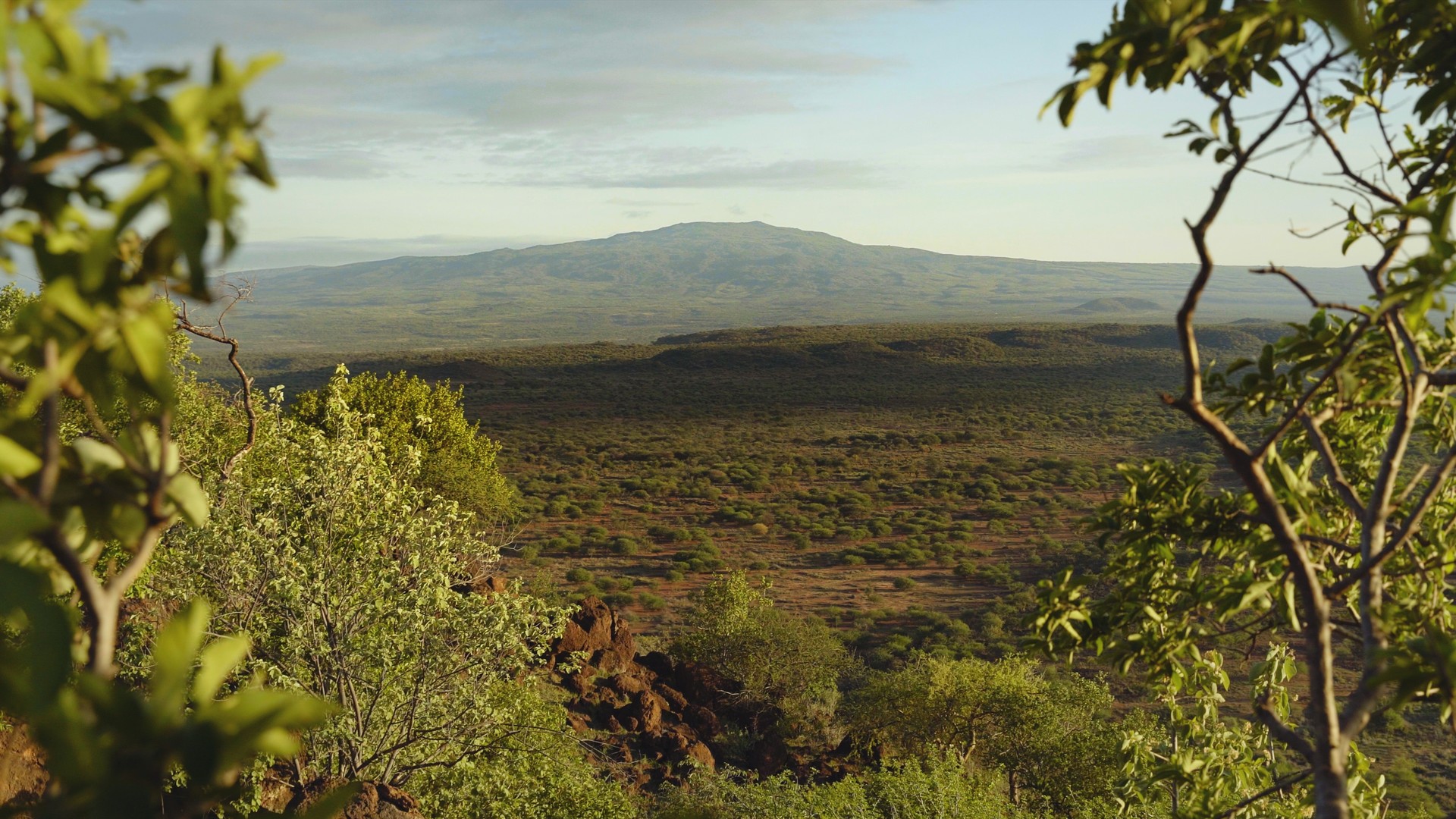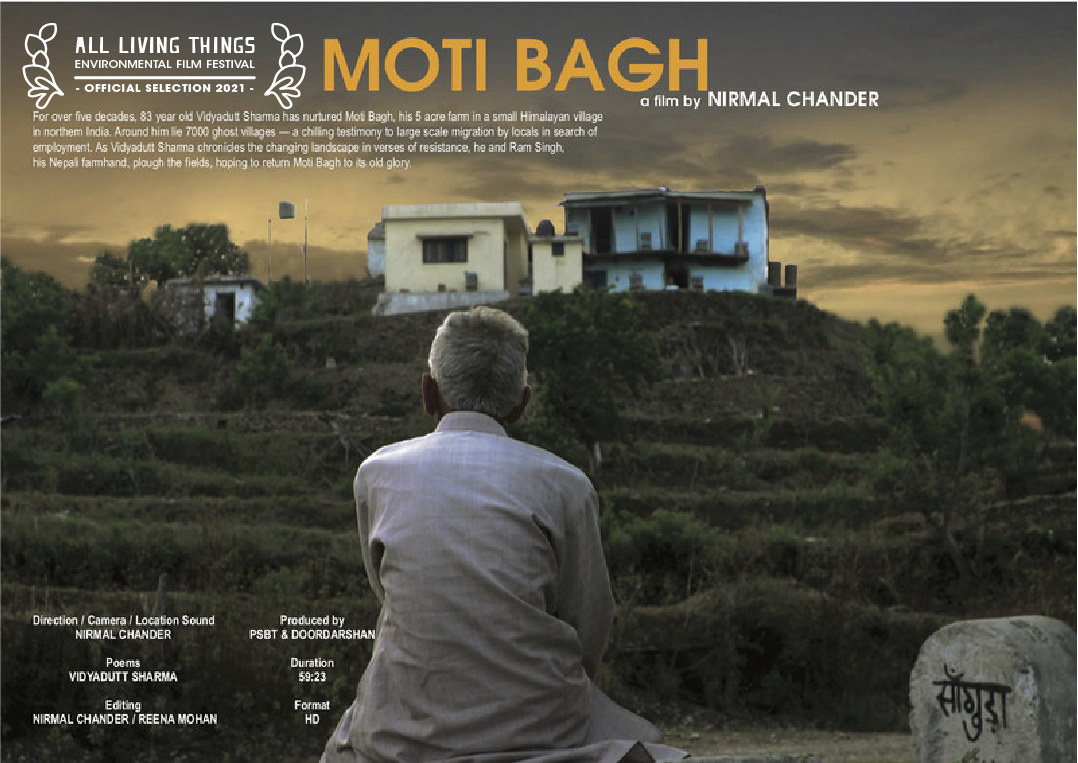13 Films to Watch at ALT-EFF 2021
First published on
October 04, 2021
Sanctuary's Editorial Team reviews 13 of the 44 films that comprise the official selection of the All Living Things Environmental Film Festival (ALT EFF) 2021. Scan through these reviews before heading over to ALT EFF to purchase a curated film bundle or all-access pass! The film festival runs from October 9-17, 2021.
Sky Aelans
_1633418592.png)
Directed by Edward Manuga, Georgianna Lepping, Jeremy Gwao, Regina Lepping, Zahiyd Namo, Junior Patrick Makau, Manner Levo, Neil Nuia, Daniel Kakadi | Soloman Islands | 7 min.
For a blissful few minutes, I’m transported. A chorus of birdsong and raindrops welcomes me to the Sky Aelans (sky islands), the high mountain forests of the Solomon Islands, and their last guardians. Located off the coast of Papua New Guinea, the Solomon Islands’ six major and 900 small islands have lost their old-growth forests to logging. Today, the last remaining patches are protected by a December 2018 Government Pledge to protect mountain regions above 400 m.
Directed by a cohort majorly comprising Soloman Islanders, this short is a heartfelt homage to their homeland. They use sweeping wide shots of cloud-kissed mountains and vignettes of culture and wildlife to showcase their intimate connection with the land of their ancestors. Native music, raw sounds, and an evocative narration make for a poetic film. Sky Aelans is nuanced storytelling at its best.
Reviewed by Abinaya Kalyanasundaram
The Tracker

Directed by Sarah Menzies | Kenya | 9 min.
Mutinda surrendered his weapons when his wife gave him an ultimatum: give up poaching, or lose your family.
The Tracker is a classic story of difficult circumstance, violence and repentance, told by the once-notorious poacher, who decimated elephant and rhino populations in Amboseli, Kenya. In this eight-minute watch, Mutinda and his wife Jane reflect on his journey from a criminal to a celebrated ranger, renowned for his bush skills.
While the film succeeds in providing an uplifting viewing experience, one line rankles. Mutinda speaks of “hunting down” poachers as part of his work with Big Life Foundation. Given that conservation militarisation can have unjust outcomes for marginalised communities - Mutinda himself became a wanted poacher because he had no job opportunities, no land and a family to provide for - the filmmakers could have spared a few moments to explore this issue more compassionately.
Overall though, this is a feel-good story about the potential for transformation within each of us.
Reviewed by Cara Tejpal
Shaba

Director Ami Vitale | Kenya | 13 min.
When Shaba arrived at Reteti Elephant Sanctuary, Kenya, she was one year old. Her mother had been killed by poachers. When she left a few years later, she was Reteti’s first matriarch to return to the wild, keeping her fellow sanctuary elephants in line. This story, of the power of patience, love and resilience, is captured oh-so-warmly through Ami Vitale’s expert eye.
Reteti is one of Africa’s many elephant orphan sanctuaries. But it is the first that is completely owned and operated by a local community – the Samburus. Caretakers, mostly women, rescue, nurture and rehabilitate orphaned elephants, often victims of Africa’s ivory syndicates. The film captures life in this elephant oasis, against the stunning backdrop of the Namunyak Wildlife Conservancy where it is located. Tense rescues, frolicking elephants, tender lullabies, heartening bonds... and tearful goodbyes as elephants return to their savannah home.
But there’s something else happening too. Something wonderful. The fetters of patriarchy are loosened as the Samburu women become the first indigenous female elephant keepers in Africa, inspiring more young women from the community to do so too. “We are helping these babies, but really, it is the elephants helping us”.
A film with heart, Shaba gives hope. Something we all need more of today.
Reviewed by Abinaya Kalyanasundaram
Dhivarah
_1633417167.jpg)
Directed by Giridhar Nayak | India | 13 min.
Set in Malpe, Karnataka, this short film follows the lives of the Mogaveera fishing community whose sustainable methods are threatened by relentless industrial fishing. In its limited time frame, Dhivarah shows the exploitative nature of capitalism, and its devastating impact on indigenous communities that are directly dependent on nature. The Mogaveera fish gently, mindful of the ecology of the sea they have been familiar with for generations, down to the breeding patterns of local marine life. The film succinctly captures how their livelihood has fallen into jeopardy as the sea has less to offer each year. While the larger story is certainly far more complex than the film reveals, Dhivarah is a much-needed reality check that will hopefully inspire action.
Reviewed by Divya Kilikar
The Pangolin Man
_1633417266.jpg)
Directed by Ellie Stones | Uganda | 18 min.
Simple and sweet, this student film spotlights Moses Arineitwe, the eponymous ‘pangolin man’. At the edge of the Bwindi Impenetrable National Park in Uganda, Moses champions the world’s most trafficked animal by rescuing pangolins destined for slaughter and educating his community about conservation imperatives. Moses drives down dusty lanes in a rattling vehicle to negotiate the release of poached pangolins, teaches wildlife lessons on a mottled blackboard to the delight of school children, and is the custodian of a sprawling vegetable garden where reformed poachers grow cabbage for sale in the local market.
Though the film is missing some nuance, and relies heavily on a “one man’s fight” narrative, it does an excellent job of outlining the difficulties faced by grassroots conservationists. Moses’ grit reflects the stories of thousands of individuals across the world who persist in their work despite formidable challenges, most pressingly the lack of funds, training and equipment.
The pangolin is a fascinating animal, and the film boasts a few lovely clips that allow the viewer to admire its form. Moses himself is fantastically endearing: absolutely besotted with the species, and yet entirely compassionate towards humans too. “Poachers are not necessarily bad people. Some poachers go poaching because of their situation,” he explains.
Watch The Pangolin Man for a glimpse at a local conservation effort in Uganda. And for the little burst of inspiration it will trigger in your heart.
Reviewed by Cara Tejpal
Your Tiger, Our Forest
_1633418911.png)
Directed by Ishan Sharma | India | 23 min.
Ishan Sharma’s straightforward and elegant documentary will deliver a smooth orientation on the challenges of conserving wild tigers outside Protected Areas in India. Comprising expansive drone views of the rugged central Indian landscape, and interviews with a spectrum of stakeholders, the film explores themes of tiger dispersal, forest dependence, habitat fragmentation and conflict.
Spread across 1200 sq. km., the Bramhapuri Forest Division encompasses 600 forest villages. Once just a corridor for tigers moving between the Tadoba-Andhari and Navegaon-Nagzira Tiger Reserves, the division is today a source population of tigers – home to no less than 44 adult big cats, some in search of new territories.
As forest officers, activists, scientists and community members air their views, one truth repeatedly rises to the surface: conservation goals will remain elusive until forest-dependent communities directly benefit from them.
Reviewed by Cara Tejpal
Into the Dark
_1633417555.png)
Directed by Michael O. Snyder | Norway | 29 min.
Oceanographer Finlo Cottier sits on a tiny boat in complete darkness and silence, only a short distance from their ship, that had turned off all lights and engines. His senses pick up nothing but the occasional bird overhead, and the sounds of a quietly living, thriving sea. “Nature makes you aware of yourself and your surroundings like nothing else,” he says in wonder.
A team of scientists set off north from Svalbard, Norway, to witness the darkest weeks of the polar night, when the sun sets for the winter and does not rise again for six months. This 29-minute documentary efficiently captures their perilous journey into one of the most vulnerable habitats in the world.
To their surprise, the team finds organisms they believed would be inactive, responding promptly to every microscopic source of light. The conclusion is hard to deny – Arctic light pollution from human activities is one of the largest environmental hazards in the region. In just his lifetime, Cottier has seen massive Arctic ice turn into seasonally open ocean, allowing more humans to encroach, bringing light into the polar night and possibly triggering abnormal phytoplankton blooms that could further affect our ocean ecosystems. The filmmakers aptly captured the terror of utter helplessness felt by the scientist as he quietly floated on his tiny boat on the open Arctic waters. He morosely recalls how the now melted water was once “permanently” frozen ice, when he had visited as a youth.
Into the Dark reveals just enough to paint the terrifying reality of the climate feedback loop, of our rapidly diminishing ice cover, and what it means for the future of Earth.
Reviewed by Divya Kilikar
Mt. Suswa

Director Oliver Goetzl | Kenya | 50 min.
Numerous volcanoes dot the massive East African Rift that cuts through Ethiopia all the way to Mozambique. But not many have the unique double crater formation of Mt Suswa of Kenya. Inaccessible and hardly explored, this natural wonder’s inner moat-like crater harbours a rich diversity of creatures, great and small. African wild dogs roam in packs, falcons and owls fly overhead as bustards stroll the grassland, herds of puku and klipspringers graze amidst the steaming land, and the occasional elephant herd passes through on the migratory route from Amboseli to Masai Mara. Glimpses of these and more are found in this almost one-hour Animal Planet-style documentary.
The cinematography of ‘Mt.Suswa’ is gorgeous. There are aerial time-lapse videos of verdant landscapes, slow-motion sequences of wild dogs hunting, and, a personal favourite, sweeping shots of the massive underground tunnels, formed thousands of years ago by lava rivers. One of these caverns, christened the “Baboon Parliament” by the local Masai, is perhaps the only known place in the world where olive baboons roost in caves, along with large-eared free-tailed bats and rock hyraxes.
Though tighter editing could have reduced runtime by at least a third, witty narration keeps even the not-so-interesting parts enjoyable. Nevertheless, a passable film about one of Kenya’s lesser-known wildernesses.
Reviewed by Abinaya Kalyanasundaram
The Crab Season
_1633417802.jpg)
Directed by Martin Benoist | France | 52 min.
The Crab Season is a slow film. This is not a critique, merely an observation.
At the foot of the striking chalk cliffs in Étretat, France, director Martin Benoist shadows Christophe Leboucher. The elderly crab catcher, clad in overalls, toting a bucket and crate, taps his way into the water, groping along rocks and crevices for the crabs he will catch by hand. Almost entirely without vision, Christophe calmly navigates this liminal landscape – “moving your hand along a rock is like reading braille,” he says.
Quiet and tender, the film allows the viewer to experience the gorgeous Normandy coast from the point of view of a man who lives by the pull of the tide. Towards the end of the film, Christophe dwells on the love and comfort he finds in this intertidal zone, contrasting it to the difficulties he faces in the “world of man”. The scene opens perspective and offers new insight on how the natural world can be experienced and felt in countless unique and wonderful ways.
The Crab Season is an unambitious, unpretentious watch. It may not resonate with those attuned to the crashbangpow of commercial cinema, but it will appeal to those who can appreciate the slow life. In a world of fast travel, it chooses the beauty of familiarity, and spotlights the intimate relationship one can nurture with land and/or sea.
Reviewed by Cara Tejpal
Moti Bagh

Directed by Nirmal Chander Dandriyal | India | 60 min.
A film full of quotables draped in melancholy, Moti Bagh is an unhurried profile of 83-year-old Vidyadutt Sharma. A gentle maverick, he has farmed his fields in the Pauri district of Garhwal for the past 52 years. The film contemplates the hundreds of abandoned villages and fallow fields in the region, a result of shifting aspirations and mass migration to cities.
For the most part the camera follows its protagonist as he reminisces, sings, philosophises and works the land. But it also dwells on the life and hopes of Ram Singh, a migrant worker from Nepal who has tilled Moti Bagh for 18 years but still faces the insecurities of being an “outsider”. The evident mutual respect between the two men offers some soothe, even when spectres of nation, migration and caste hover unspoken.
The minimal sound design of the film allows the old farmer’s voice, often lifted in song and poetry, to guide the narrative. “How can intellect alone feed one’s hunger?” he asks. “Your god resides in temples, mine resides in the fields”. It is this commitment to growing food and tending to the soil that Vidyadutt Sharma underscores so poignantly. But Sharma is not just a farmer, poet and philosopher, he is also an activist. In one interlude we watch as he challenges the authorities about an absentee bus service that has been redirected to cater to Hindu pilgrims instead of local villages.
Sharma’s once piercing eyes (yes, there are pictures from his youth) are watery and his face is as furrowed as his fields, but he cuts an entirely enchanting figure. Towards the end of the film, we watch a group of men heave gargantuan radishes grown in Sharma’s greenhouse onto a weighing scale. One of these, weighing almost 23 kg., is recorded as the largest ever grown in India. In this generous produce, we witness the proof of Sharma’s earthy philosophies and toil. Mature, moving and well-paced, director Nirmal Chander Dandriyal deserves accolades for telling us this Himalayan story.
Reviewed by Cara Tejpal
The Burning Field
_1633418518.jpg)
Directed by Justin Weinrich | Ghana | 72 min.
My heart hung heavy in my chest through this film. Agbogbloshie in Ghana’s Accra region is one of the largest depositories of electronic waste in the world. This is where much of North America and Europe ships off its most toxic trash. The film unfolds a day at Agbogbloshie, offering a peek into the lives of its vulnerable “workers” – young adults and even children as young as seven.
The Burning Field doesn’t overwhelm you with statistics, data or sensitive footage – what does overwhelm you though is the simple, plain reality of the youth and the deeply unacceptable devastation of the soil, which has been polluted and destroyed irrevocably by lead, mercury and other toxic metals that seep in from the burning waste. We watch as the growing population of youth that is forced to work here -- many of whom can hardly imagine a life beyond the one they have -- banter as they go about their job in a land that was once fertile and alive (though these youth have probably never seen it that way). Our electronic waste is some of the most dangerous waste we produce, and there is more of it each year than the last as we discard phones and other devices faster than ever before. Electronic devices are the cheapest (both to manufacture and purchase) they have ever been, and the number of consumers who actually repair their devices rather than replace them are few and far between.
The film is certainly a difficult watch, but a necessary one that will surely encourage viewers to rethink their consumption patterns, while offering a raw perspective -- one would rarely come across such an unwritten, unfiltered view anywhere else.
Reviewed by Divya Kilikar
The Ants and the Grasshopper
_1633418422.png)
Directed by Raj Patel and Zak Piper | Malawi and United States | 74 min.
If climate change were a tapestry, The Ants and the Grasshopper manages to seamlessly weave in threads from every institution that plays a role in the slow degradation of the planet – gender inequality, classism, the industrialisation of agriculture, land use, the privilege of ignorance… and so much more. The film reveals the interconnectedness of it all through the story of two inspiring Malawi women, who are slowly challenging societal norms in their poverty- and climate disaster-stricken village through community workshops on gender and skill-building (especially for men, who consider farming, cooking and most manual labour a “woman’s” job). The effects of climate change are inescapable in their village where the nearest river now lies bone dry for most of the year. They travel with the filmmakers to the U.S.A., where they meet several regenerative farmers who understand soil the way they do, and the power of working with nature.
Not a minute of this beautifully written film digresses, holding you captivated till the very end.
Reviewed by Divya Kilikar

.jpg)
_1633418592.png)

_1633417167.jpg)
_1633417266.jpg)
_1633418911.png)
_1633417555.png)

_1633417802.jpg)

_1633418518.jpg)
_1633418422.png)